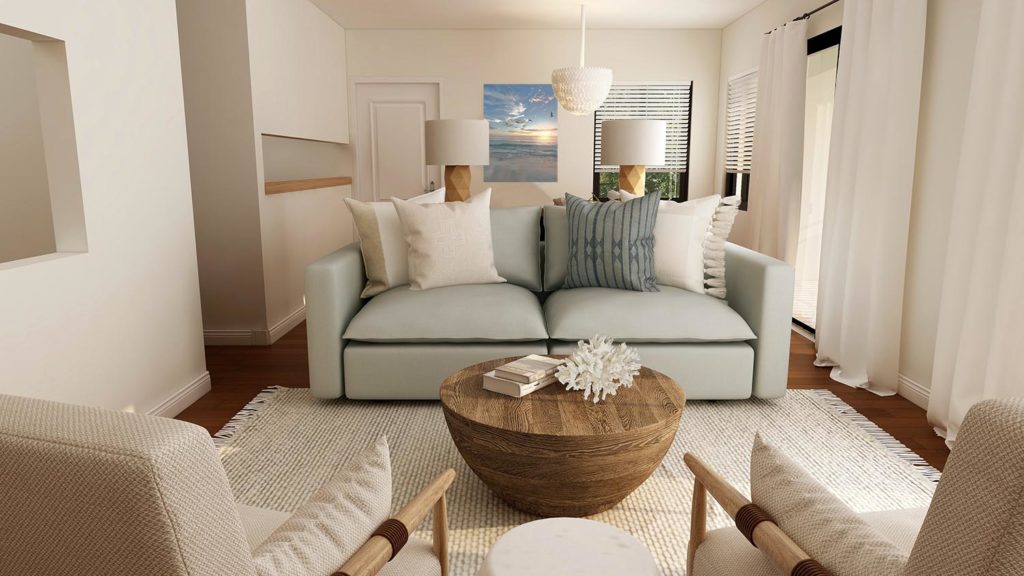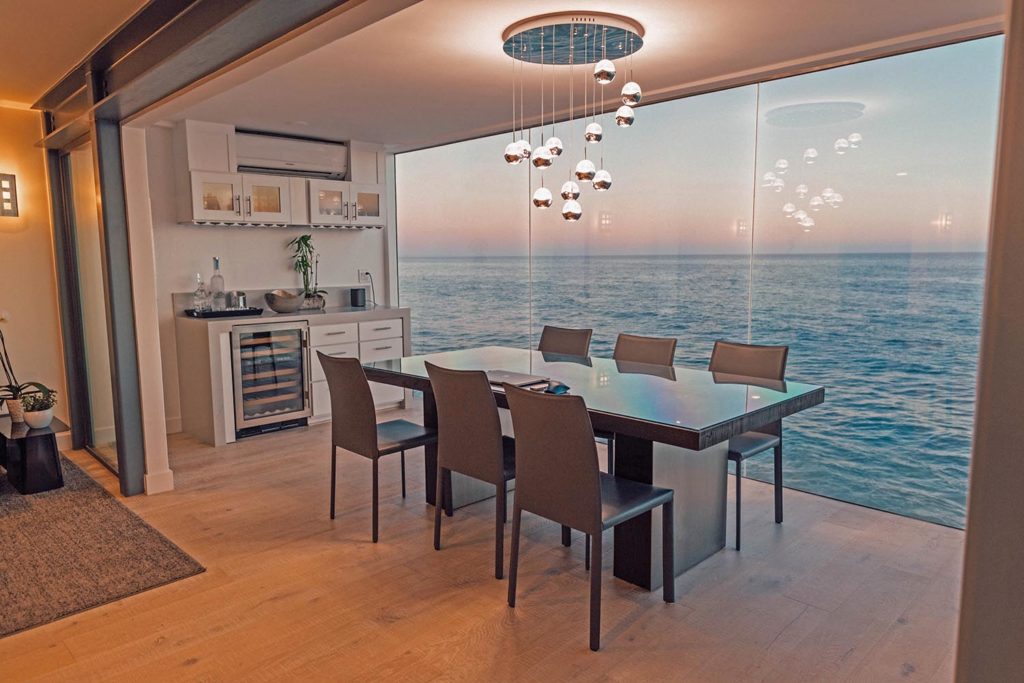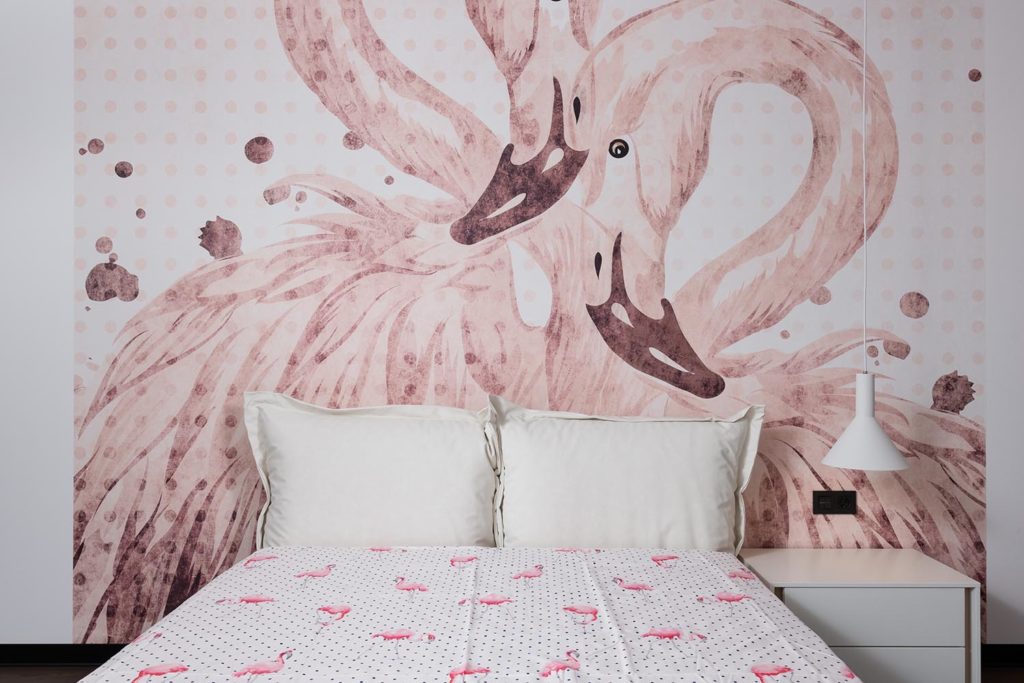
Whether you live by the coast or not, coastal decor is a very popular style. Though it is especially prevalent in beach houses, anyone can use the elements of this airy decor to bring the feeling of the beach or coast into their own home.
The classic appeal of coastal decor and its immense popularity will ensure that it never goes out of style.
So, you might ask, what are the essential elements of a coastal design?
What are the Essential Elements of Coastal Design and Decor?
There are a wide variety of elements that can be used for this style. Draw your inspiration from the coast itself. What types of images and colors do you see? Imagine the light sand, coastal rocks, beautiful water, crashing waves, sea grass, and the plethora of coastal birds that inhabit it. These images set your design pallet with lots of light colors and rich texture. An important thing to keep in mind is that “coastal” is not “tropical”, so avoid the bright colors of the tropical motif.
The key to getting it right is lots of light, an airy feel, and a few beachy elements without going overboard.
What color schemes are the most popular in coastal decor?
The light natural colors of sand offer much when looking for the airy beach look. Browns, tans, creams and white lend to the tonal, natural feel of this style and are often the colors chosen for larger upholstery pieces.
The many colors of the sea provide a great place to look for accent colors. Hues of blues, greens and greys are the key accent colors to bring interest to your neutral base. For fun you can add pops of bolder color like yellow or coral as well. These are great in pillows, accents and in your rugs and artwork. A luxurious colorful throw draped across your sofa also adds texture and appeal.
What types of textures and materials are typically used in coastal decor?

Coastal decor is all about texture and layering! The fabric of drapes and pillows often incorporate natural textures such as cotton, linen, and muslin. Stripes are a great way to add interest to these items without overwhelming the space like a busy geometric pattern or bright tropical flower print might.
While slipcovers on sofas and chairs are popular features of this style, it is certainly possible to achieve a coastal feel using more tailored or formal furniture as well. It is also becoming more common to use an outdoor fabric on indoor furniture pieces. These fabrics hold up to moisture and bright light making them extremely durable.
Coffee tables made of durable woods, metal, and glass are compatible with this style. As long as the material resists scratching, even leather is a suitable material for an ottoman that functions as a coffee table.
Wall colors are typically white or cream, but you can add character with shiplap or grass cloth. There are also wallcoverings that look like grass cloth but are actually vinyl, improving their durability and cleanability. The addition of weathered wood planks can provide a great look for a focal wall. Other items, such as picture frames, can also feature this elegant material.
Flooring should always be durable. Hardwoods, luxury vinyl planks, and tile are great choices. If possible, avoid wall to wall carpeting. Area rugs are another key element to this style. Sisal rugs are a popular choice for living rooms. Another great option is jute, which is softer than sisal. However, jute tends to be less durable, so it is best for areas of lower traffic, such as a bedroom. While sisal rugs work well by themselves, layering rugs on top of each other is a popular alternative.
There are additional elements that you should consider adding to your design.
What other elements should you consider?
Plants are an effective, and often overlooked, way to add color and texture to your room. Succulents offer a wide variety of shapes and sizes, while plants like the fiddle leaf fig tree and palms can add drama to a larger room. Adding a grouping of three smaller plants is a wonderful way to incorporate more interest. Be sure to keep the plants in the same tone, but you can experiment with different leaf types and shapes. While the containers for the plants can be different shapes, they should be more neutral and similar in color to each other.
Teak is a great wood to use for furniture or accents. It is especially good in outdoor spaces due to its natural rot resistance. It is also a lightly colored wood making it the perfect pairing for this fresh uncluttered style.
Mirrors are another great way to add interest to your space. Possible materials for mirror frames include seagrass, wood, weathered wood, and iron.
Embellishments like twine and rope can also accentuate elements in a design. Tastefully added signage can bring a bit of personality to a design, and woven baskets can provide both interest and storage.
What are some other important elements to emphasize in your design?
How do you use lighting and artwork in coastal decor?

You should layer lighting sources throughout your space. Overhead lighting can feature materials like iron or metal (sometimes with rope accents). Sea glass and shell chandeliers are fun to add over a dining or breakfast table.
Beautiful clear glass fixtures are a wonderful addition to any space and are reminiscent of the clear waves and bubbles as they splash on shore. Table lamps can be playful – think coral or shells, or lights made from interesting articles found on the beach, like driftwood.
Art is an absolute must for any space. One naturally thinks of paintings of the ocean, which depending on your style can be realistic or impressionistic. These can be either oil or watercolor. A more economical approach could be framed posters or high-quality prints.
If you prefer a nautical space, art is a great way to bring in this element: A beautiful lighthouse print or a shadowbox showcasing the many different types of knots. Shadowboxes can also showcase feathers, shells and even the many types of sharks’ teeth found along the shores. Sculptures and objects found on the shoreline are also wonderful ways to showcase your style on your walls.
Remember the key to coastal decor is not to overdo it. So, take caution when using the following themes in your designs.
What are the major themes that characterize Coastal Decor?
To maintain a classic and timeless look add just a few of these to your home’s look. Too many selections from these themes tend to make a design look kitschy and overdone – here, less is definitely more. Here are some ideas within several of the popular themes:
Nautical Themes. While these are typically associated with ships and navigation anything associated with sailing and seamanship work well. Here are a few examples:
- Anchors
- Nautical maps
- Compasses
- Lighthouses
- Rope
- Nets
Sea Life. There are abundant creatures at the shore, on the beach, and in the ocean. Here are a few that are frequently found in coastal decor:
- Shells
- Starfish
- Crabs
- Sea turtles
- Sword Fish
- Sea horses
Shore Birds. These playful and sometimes graceful birds are often used in watercolor prints adorning the walls of coastal-styled homes. Here are a few examples of birds to use:
- Sand Pipers
- Oystercatchers
- Seagulls
- Pelicans
- Egrets
- Herons
Please, no flamingos!

Summary
Whether you own a beach house or not, a coastal theme can bring a touch of the beach to your space. Remember the key is light color schemes, natural textures, and adding only a few well-placed beach-themed items.
